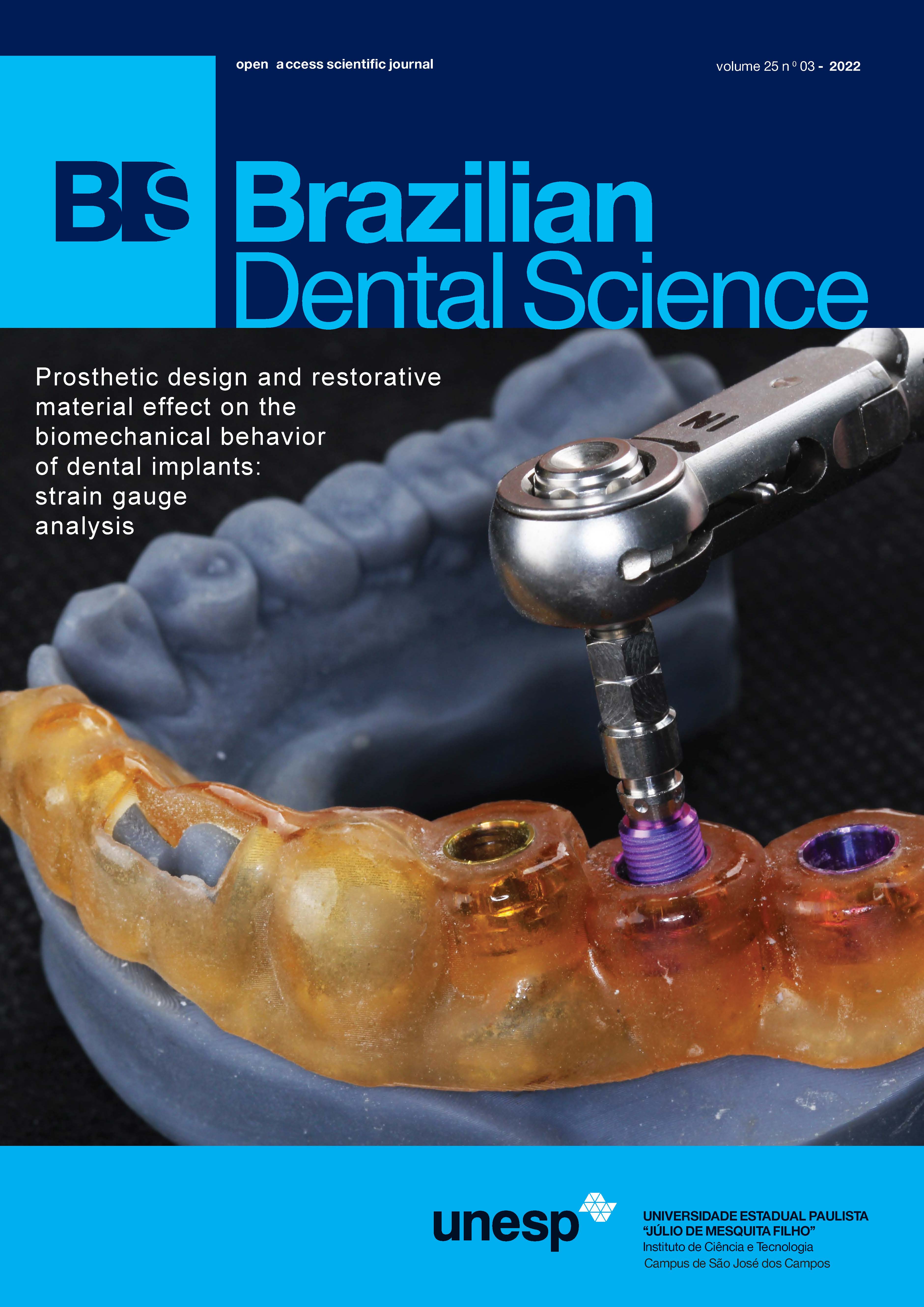3D stereophotogrammetry quantification for tissue repositioning using Botulinum toxin A: a case report
DOI:
https://doi.org/10.4322/bds.2022.e3411Resumo
Hereby, we objectively assessed the outcomes of a facial-lifting procedure with Botulinum toxin type A (BoNT-A)
using a 3D stereophotogrammetry quantification (3D-SQ). A 46-year-old female patient received a full face
BoNT-A treatment in a total dose of 180 Speywood Units (sU). Frontal, lateral and oblique photographs were
taken before and 20 days after treatment, at rest and during mimic movements. Also, a facial scanning was
performed before and 20 days after BoNT-A injections. The results were analyzed using a 3D-SQ software. The
photographs showed a decrease in expression lines and dynamic wrinkles. In addition, a better-defined jawline
and volume gain in the midface area with improvement of the profile appearance, due to the reduction of the
sagging skin under the chin, was observed. The 3D-SQ showed volume gains of 1.17 ml on the right and of
1.59 ml on the left cheekbone areas, due to the cranially soft-tissue repositioning. In addition, a decrease in the
volume of melomental folds areas (0.27ml on the right and 0.41 ml on the left side) was reported, compatible
to the above-mentioned volume gain. Measurements considering cephalometric points showed a decrease in the
total facial height (distance from Trichion to Mental points), suggesting a soft tissue dislocation in an upward
direction. Finally, this case report showed quantitative results that can evidence the role of BoNT-A in faciallifting
procedures. These results reinforce the importance of using a 3D-SQ to assess the outcomes of BoNT-A
and, probably, other aesthetic procedures.
KEYWORDS
Botulinum Toxin; Platysma; Facelifting; 3D images; Quantificare.
Downloads
Downloads
Publicado
Como Citar
Edição
Seção
Licença
TRANSFERÊNCIA DE DIREITOS AUTORAIS E DECLARAÇÃO DE RESPONSABILIDADE
Toda a propriedade de direitos autorais do artigo "____________________________________________________________________" é transferido do autor(es) para a CIÊNCIA ODONTOLÓGICA BRASILEIRA, no caso do trabalho ser publicado. O artigo não foi publicado em outro lugar e não foi submetido simultaneamente para publicação em outra revista.
Vimos por meio deste, atestar que trabalho é original e não apresenta dados manipulados, fraude ou plágio. Fizemos contribuição científica significativa para o estudo e estamos cientes dos dados apresentados e de acordo com a versão final do artigo. Assumimos total responsabilidade pelos aspectos éticos do estudo.
Este texto deve ser impresso e assinado por todos os autores. A versão digitalizada deverá ser apresentada como arquivo suplementar durante o processo de submissão.




























